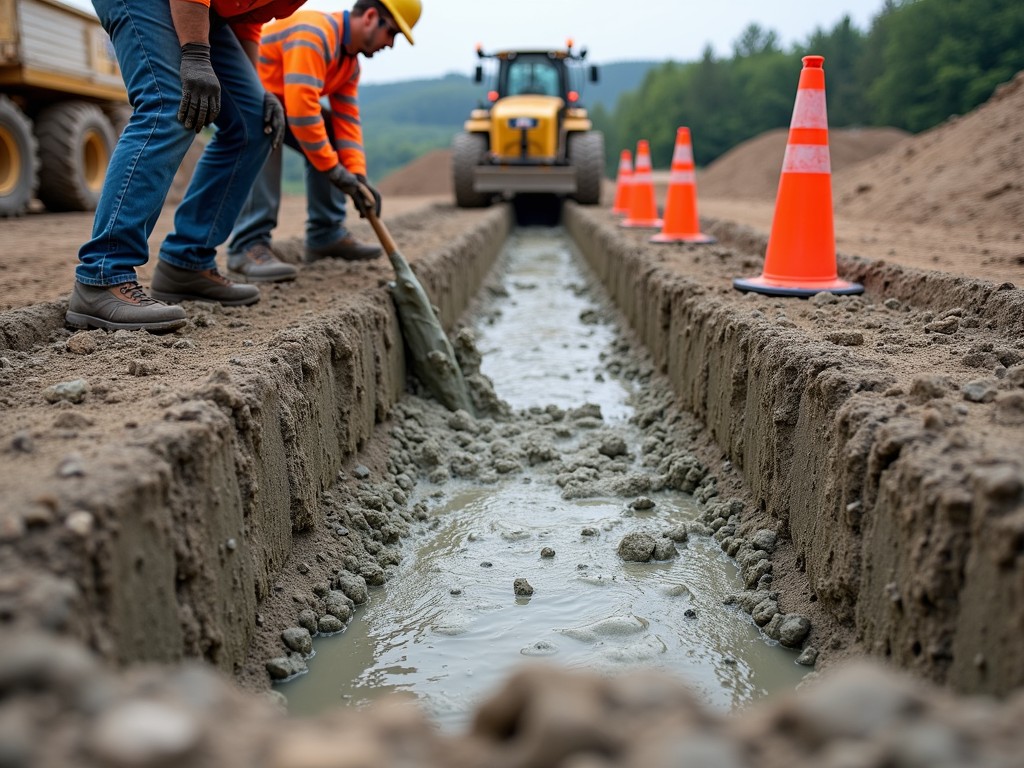Concrete Footing Inspection Checklist: Essential Guide
Concrete Footing Inspection Checklist: A Step-by-Step Guide
In construction, ensuring solid groundwork is crucial. Follow this concrete footing inspection checklist to guarantee your project stands the test of time.
Concrete footings form the foundation of stability for any structure, whether it’s a simple home or a large skyscraper. Conducting a thorough inspection is essential not only for ensuring compliance with building codes but for guaranteeing the longevity and safety of the structure. In this guide, we’ll walk through the core elements of a concrete footing inspection checklist, share insightful tips, and delve into the details necessary for a successful footing calculation. Let’s dive in!
Importance of Concrete Footings
Concrete footings are critical underpinnings that distribute your structure’s load to the soil. They play a vital role in maintaining the integrity of buildings against natural forces. Proper footing ensures that the building stands firm, preventing issues such as uneven settling or foundation cracks.
Core Components of a Concrete Footing Inspection Checklist
A solid inspection checklist can ensure everything is designed and constructed correctly. Here’s a comprehensive list of what you should look for:
- Design Verification:
- Ensure that the design complies with local building codes and standards.
-
Verify dimensions, depth, and width as per the structural engineer’s plans.
-
Site Preparation:
- Check for proper site grading and drainage to prevent water accumulation.
-
Confirm the removal of organic materials such as roots or topsoil.
-
Formwork Quality:
- Inspect formwork for alignment and stability.
- Ensure that forms are watertight, avoiding leakage of concrete.

- Rebar Placement:
- Inspect the type, size, and spacing of rebar, ensuring it matches project specs.
-
Ensure rebar is properly supported and tied to prevent shifting during concrete pour.
-
Footing Calculation Verification:
- Double-check all calculations involving load-bearing requirements.
-
Use recognized software or consult a structural engineer for complicated designs.
-
Concrete Mix and Pour:
- Verify concrete mix meets required standards for strength and durability.
- Monitor weather conditions; certain temperatures can affect curing.

- Curing Process:
- Ensure appropriate curing time is allowed to prevent premature load bearing.
-
Keep the concrete moist during the curing process, possibly with curing compounds or water spray.
-
Final Inspection:
- Confirm the curing process completion and inspect for surface defects.
- Issue a certification of completion by a qualified inspector.
Tips and Personal Insights
- Stay Proactive: Regularly communicating with your construction team and inspector can prevent costly mistakes.
- Use Technology: Leverage mobile apps for real-time updates on weather conditions that can impact your construction.
- Hands-On Experience: Walk the site yourself. A visual inspection by you, even if you’re not the main inspector, can bring new perspectives.

Wrapping Up
Following a detailed concrete footing inspection checklist ensures your project is both compliant and enduring. By employing precise footing calculation and maintaining stringent verification measures, issues such as settlement and cracking can be avoided. Remember, the stability of your entire structure starts from these hidden supports.
Recommended Readings
To deepen your understanding and improve your project outcomes, consider exploring the following:
- "Structural Foundations: Overview and Best Practices"
- "The Role of Weather in Concrete Curing"
- "Modern Techniques in Footing Design"
Ensure you’re well-informed, prepared, and adherent to best practices as you embark on your construction journey, ultimately leading to successful and lasting structures.





